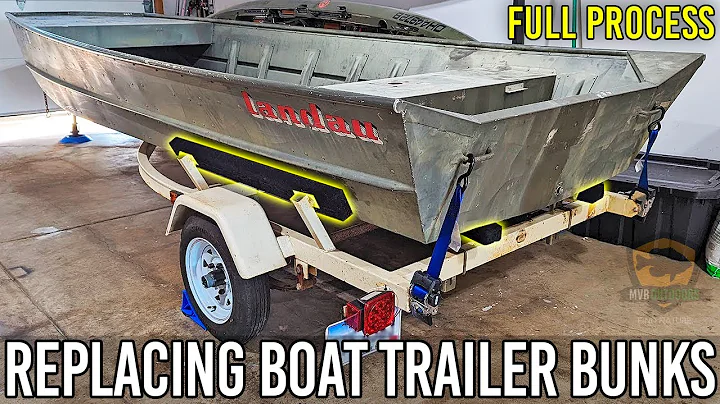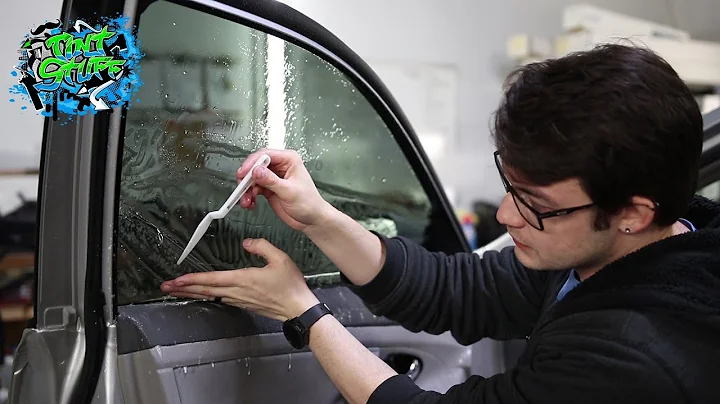Master the Art of Parkerizing to Protect Your Firearm
Table of Contents
- Introduction to Parkerizing
- How Does Parkerizing Work?
- Advantages of Parkerizing
- Disadvantages of Parkerizing
- Tools and Materials Required for Parkerizing
- Steps to Parkerize a Gun
- Stripping the Gun Down
- Separate the Parts
- Metal Preparation
- Mixing the Solution
- Heating the Solution
- Activating the Solution
- Cleaning the Parts
- Park Rising
- Rinsing the Parts
- Post-Treatment
- Repeating the Process for Other Parts
- Allowing Parts to Sit Overnight
- Reassembly
- Recommendations for Shooting After Parkerizing
- Frequently Asked Questions (FAQs)
Article
🎯 Introduction to Parkerizing
Parkerizing is a popular finish for steel firearm parts, providing excellent protection against corrosion and rust. This process involves applying a thin, porous layer of phosphate coating to the metal, which also acts as an oil absorber. Initially developed in the 19th century, Parkerizing gained widespread adoption in the 20th century, particularly as a finish for military weapons used by the US and many other countries. What makes Parkerizing appealing, in addition to its practicality, is that it requires minimal equipment to achieve satisfactory results.
🚀 How Does Parkerizing Work?
The process of Parkerizing gun parts is relatively straightforward. It begins with stripping the firearm down completely, removing all internal components until you have bare assemblies. It is essential to set aside any stainless steel, brass, or aluminum parts, as Parkerizing only works on regular steel. Next, any existing finish, such as bluing, must be removed either chemically or through sanding. The goal is to roughen the metal surface, as a smoother surface inhibits the formation of a thick, protective coating.
To prepare the Parkerizing solution, follow the instructions provided with the product. The solution is then heated to the appropriate temperature, typically around 195 degrees Fahrenheit. Additionally, atomized steel wrapped in a coffee filter is suspended in the solution for about an hour to activate it and season it. Once the solution is ready, the cleaned gun parts are carefully immersed in the tank. To avoid contamination, the parts should be suspended from wires, ensuring they do not touch the tank's sides or bottom.
The reaction between the solution and the metal parts results in the release of tiny bubbles. The parts should remain in the solution for a minimum of 5 minutes, but no longer than 15 minutes. Once the gassing stops, the parts are removed and thoroughly rinsed to ensure all traces of the park solution are removed. After rinsing, the parts can be treated with a specific post-treatment oil or a light oil of choice to displace any remaining water residue. Lastly, the process is repeated for all other parts, allowing them to sit overnight before reassembly.
📌 Advantages of Parkerizing
Parkerizing offers several advantages as a firearms finish:
- Excellent Corrosion Protection: The phosphate coating formed through Parkerizing provides superior resistance against corrosion and rust, ensuring the longevity of the firearm.
- Oil Absorption: The porous nature of the Parkerized finish allows it to soak up oil, providing further protection against wear and tear.
- Cost-Effective: Parkerizing does not require expensive equipment, making it a budget-friendly option for gun owners.
- Compatibility: Parkerizing works well on various types of steel, making it suitable for a wide range of firearms.
- Durability: The Parkerized finish is known for its durability and ability to withstand harsh environments and frequent use.
⚠️ Disadvantages of Parkerizing
While Parkerizing offers many benefits, it is essential to consider its limitations:
- Limited Color Options: Parkerizing typically results in a matte gray or black finish. For those seeking a more visually appealing and customizable finish, alternatives like bluing or cerakote may be preferred.
- Maintenance Required: Like any firearm finish, Parkerizing requires regular maintenance to ensure optimal protection against corrosion. Periodically applying oil and cleaning the firearm is necessary to maintain the finish's integrity.
- Appearance: Some gun owners may find the matte finish of Parkerizing less visually appealing compared to other finishes available.
🔧 Tools and Materials Required for Parkerizing
To successfully Parkerize a gun, the following tools and materials are required:
- Heat source (stove, grill, etc.)
- Thermometer
- Nonreactive vessel
- Parkerizing concentrate
- Atomized steel
- Paper coffee filter
- Wire for suspending parts
- Sandpaper or abrasive pads
- Chemical blue remover (if needed)
- Detergent or aerosol cleaner
- Water for rinsing
- Post-treatment oil or light oil
📝 Steps to Parkerize a Gun
1️⃣ Stripping the Gun Down
Begin by completely stripping down the firearm, removing all internal components. The screw-in barrel of a bolt-action rifle can be left attached, but all other parts should be dealt with separately.
2️⃣ Separate the Parts
Separate the regular steel parts from any stainless steel, brass, or aluminum parts, as Parkerizing only works on regular steel.
3️⃣ Metal Preparation
Remove any existing finish using a chemical remover or sandpaper, ensuring the metal surface is roughened. Sandblasting is ideal but may not be accessible to everyone.
4️⃣ Mixing the Solution
Follow the instructions provided with the Parkerizing concentrate to mix the solution with water.
5️⃣ Heating the Solution
Heat the solution to the recommended temperature, typically around 195 degrees Fahrenheit.
6️⃣ Activating the Solution
Suspend a coffee filter containing atomized steel in the solution for about an hour to activate it and season it.
7️⃣ Cleaning the Parts
Thoroughly clean the gun parts by either dipping them in a heated bath with detergent or using an aerosol cleaner. From this point on, the parts should be suspended from wires to avoid contamination.
8️⃣ Park Rising
Carefully lower the cleaned gun parts into the heated Parkerizing solution, ensuring they do not touch the tank's sides or bottom. Leave them in the solution for at least 5 minutes, but no more than 15 minutes, as indicated by the gassing reaction.
9️⃣ Rinsing the Parts
Remove the parts from the solution and rinse them thoroughly, either in a rinse tank or by dunking them in clean water. Ensure all traces of the Parkerizing solution are removed.
🔟 Post-Treatment
Apply a post-treatment oil or a preferred light oil to the rinsed parts to displace any water residue and enhance protection.
1️⃣1️⃣ Repeating the Process for Other Parts
Repeat the Parkerizing process for all other gun parts, ensuring each part is properly cleaned, immersed, and rinsed. Once all parts are treated, allow them to sit overnight.
1️⃣2️⃣ Reassembly
After the parts have sat overnight, they can be reassembled to complete the Parkerizing process.
🔫 Recommendations for Shooting After Parkerizing
After Parkerizing a gun, it is recommended to thoroughly inspect the firearm and conduct proper function checks before shooting. Ensure all parts are correctly reassembled and that the firearm operates smoothly. Additionally, follow proper firearm safety protocols and use appropriate ammunition.
🙋 Frequently Asked Questions (FAQs)
Q: Can Parkerizing be done without special equipment?
A: Yes, Parkerizing can be done with basic tools and materials available in most households. While specialized equipment like sandblasters can expedite the process, achieving satisfactory results is possible with sandpaper and wire suspensions.
Q: How long does Parkerizing last?
A: The durability of Parkerizing depends on various factors, including the maintenance routine, environmental conditions, and frequency of use. With proper care, Parkerizing can provide long-lasting corrosion protection.
Q: Can Parkerizing be applied to other metals besides steel?
A: No, Parkerizing works specifically on regular steel. Metals like stainless steel, brass, or aluminum do not react to the Parkerizing process and should be separated from the regular steel parts.
Q: Is Parkerizing reversible?
A: Parkerizing is not easily reversible. Once the phosphate coating is applied, removing it completely without damaging the metal beneath can be challenging.
Resources:







